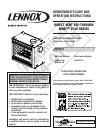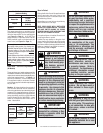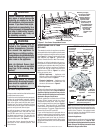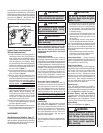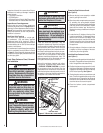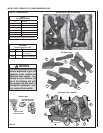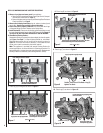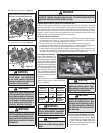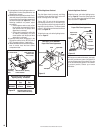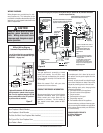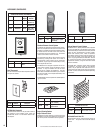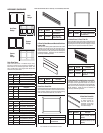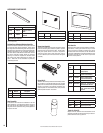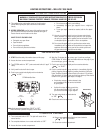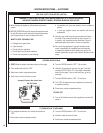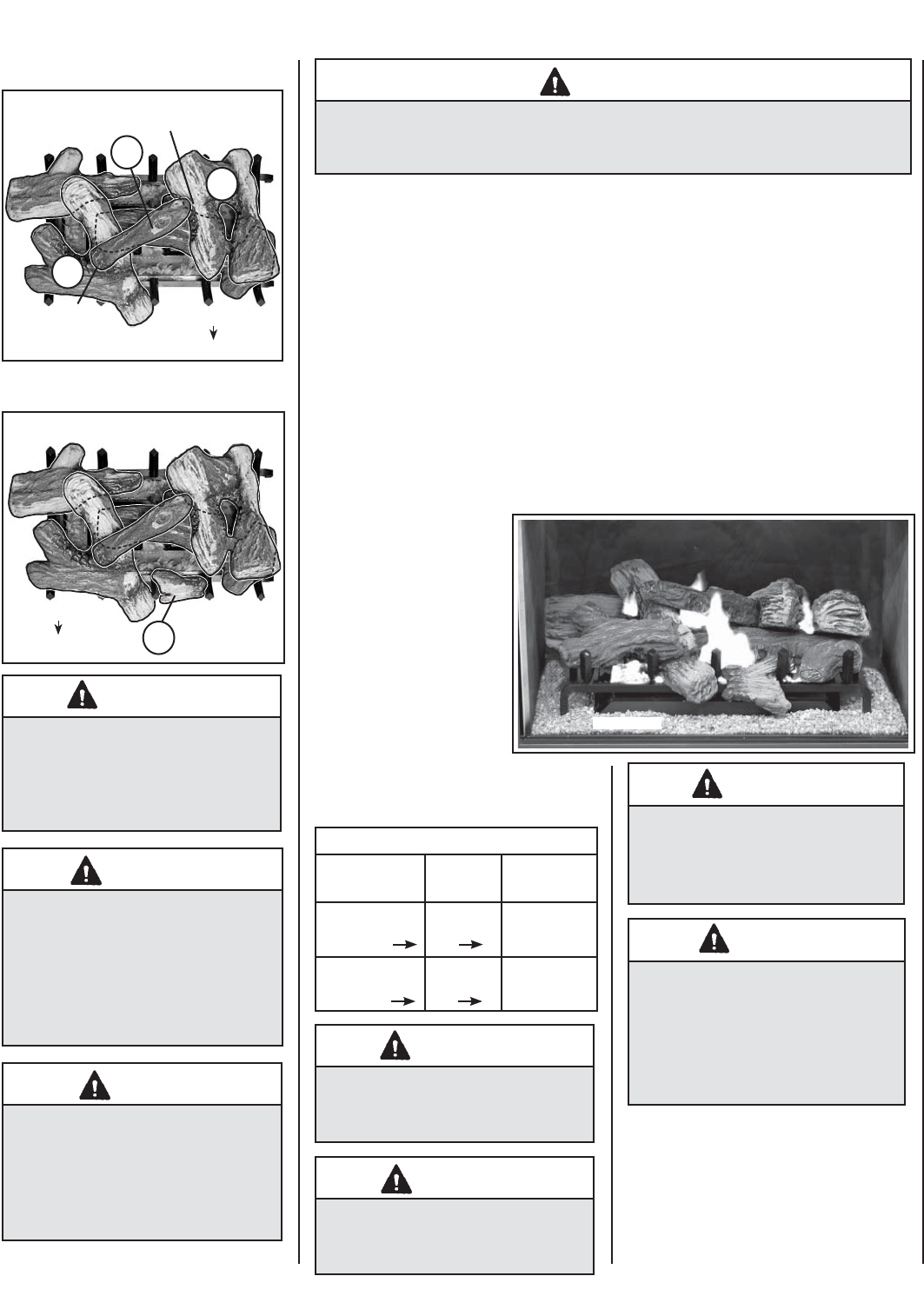
NOTE: DIAGRAMS & ILLUSTRATIONS NOT TO SCALE.
9
Position round end of log (E) against the notch of
log (D) here. Two charred spots face the front
Figure 11
10. Place Log (E) as shown in Figure 11.
WARNING
DO NOT attempt to install the logs
until the appliance installation has
been completed, the gas line con-
nected and tested for leaks and the
initial burner operation has been
checked out.
D
E
C
Position Small End of
Log (E) on The Notch of
Log (C) Here
(Valve Access Side)
11. Place Log (F) as shown in Figure 12.
(Valve Access Side)
F
Figure 12
Log (F) sits in front of the grate
WARNING
This appliance is not designed
to burn wood. Any attempt to
do so could cause irreparable
damage to appliance and prove
hazardous to your safety.
WARNING
If logs are not installed according
to the log installation instructions,
fl ame impingement and improper
combustion could occur and result
in soot and/or excessive produc-
tion of carbon monoxide (CO), a
colorless, odorless, toxic gas.
WARNING
Logs get very hot and will remain hot up to one hour after gas supply is
turned off. Handle only when logs are cool. Turn off all electricity to the
appliance before you install grate and logs.
BURNER ADJUSTMENTS (QUALIFIED TECHNICIANS ONLY)
If the air shutter openings closed too far, sooting may develop. Sooting is indicated by black puffs
developing at the tips of very long orange fl ames. Sooting results in black deposits forming on the
logs, appliance inside surfaces and on exterior surfaces adjacent to the vent termination. Sooting is
caused by incomplete combustion in the fl ames and lack of combustion air entering the air shutter
opening. To achieve a warm yellowish-orange fl ame with an orange body that does not soot, the
shutter opening must be adjusted between these two extremes.
Air Shutter Adjustment Guidelines
• If there is smoke or soot present, fi rst check the log set positioning to ensure that the fl ames are
not impinging on any of the logs. If the log set is properly positioned and a sooting condition
still exists, then the air shutter opening should be increased.
• The more offsets in the vent system, the larger the air shutter opening will need to be.
• An appliance operated with the air shutter opened too far, may have fl ames that appear blue
and transparent. These weak, blue and transparent fl ames are termed anemic.
• Propane models may exhibit fl ames which candle or appear stringy. If this is present and per-
sists, adjust the air shutter to a more closed position, then operate the appliance for a few more
minutes to ensure that the fl ame normalizes and the fl ames do not appear sooty.
Air Shutter Adjustment Guidelines
:
Amount of
Primary Air
Flame
Color
Air Shutter
Adjustment
If air shutter is
closed too far
Flame will
be orange
Air shutter
gap should be
increased
If air shutter is
open too far
Flame will
be blue
Air shutter
gap should be
decreased
The following chart is provided to aid you in
achieving the correct air shutter adjustment
for your installation.
WARNING
Air shutter adjustment should
only be performed by a qualifi ed
professional service technician.
WARNING
Ensure front glass panels are in
place and sealed during adjust-
ment.
CAUTION
The air shutter door and nearby
appliance surfaces are hot. Exer-
cise caution to avoid injury while
adjusting fl ame appearance.
CAUTION
Carbon will be produced if the air
shutter is closed too much. Any
damage due to carboning result-
ing from improperly setting the
air shutter is not covered under
the warranty.
Vermiculite
Figure 13 *- Burner Flame Appearance
Flame Appearance & Sooting
Proper fl ame appearance is a
fl ame which is blue at the base
and becomes yellowish-orange in
the body of the fl ame. When the
appliance is fi rst lit, the entire fl ame
may be blue and will gradually turn
yellowish-orange during the fi rst
15 minutes of operation. If after
period the fl ame stays lowered
blue, or if the fl ame is orange with
evidence of sooting (black tip), the
air shutter opening may need to
be adjusted.
Burner Air Shutter Adjustment Procedure
1. Locate adjustment rod and adjust air shutter
to the standard setting as shown in Figure
14 (adjustment rod is located in the lower
control compartment). Note: Rotating the
adjustment rod counterclockwise decreases
air and clockwise increases air.



